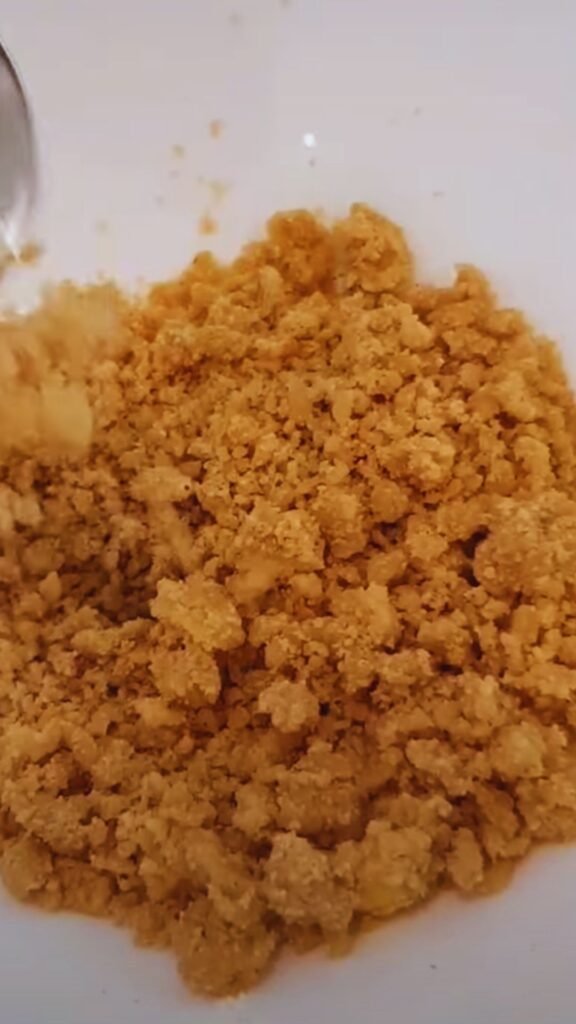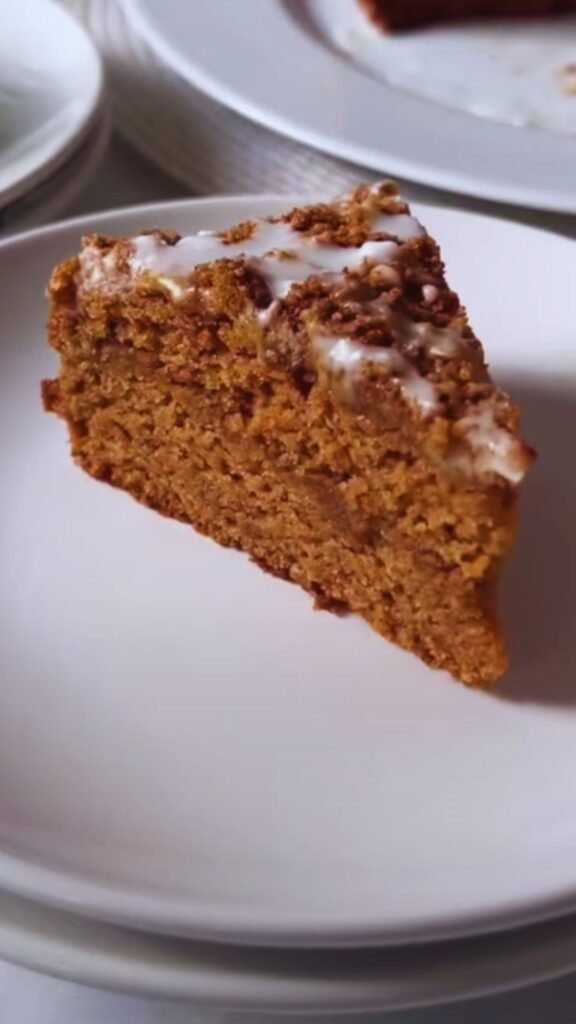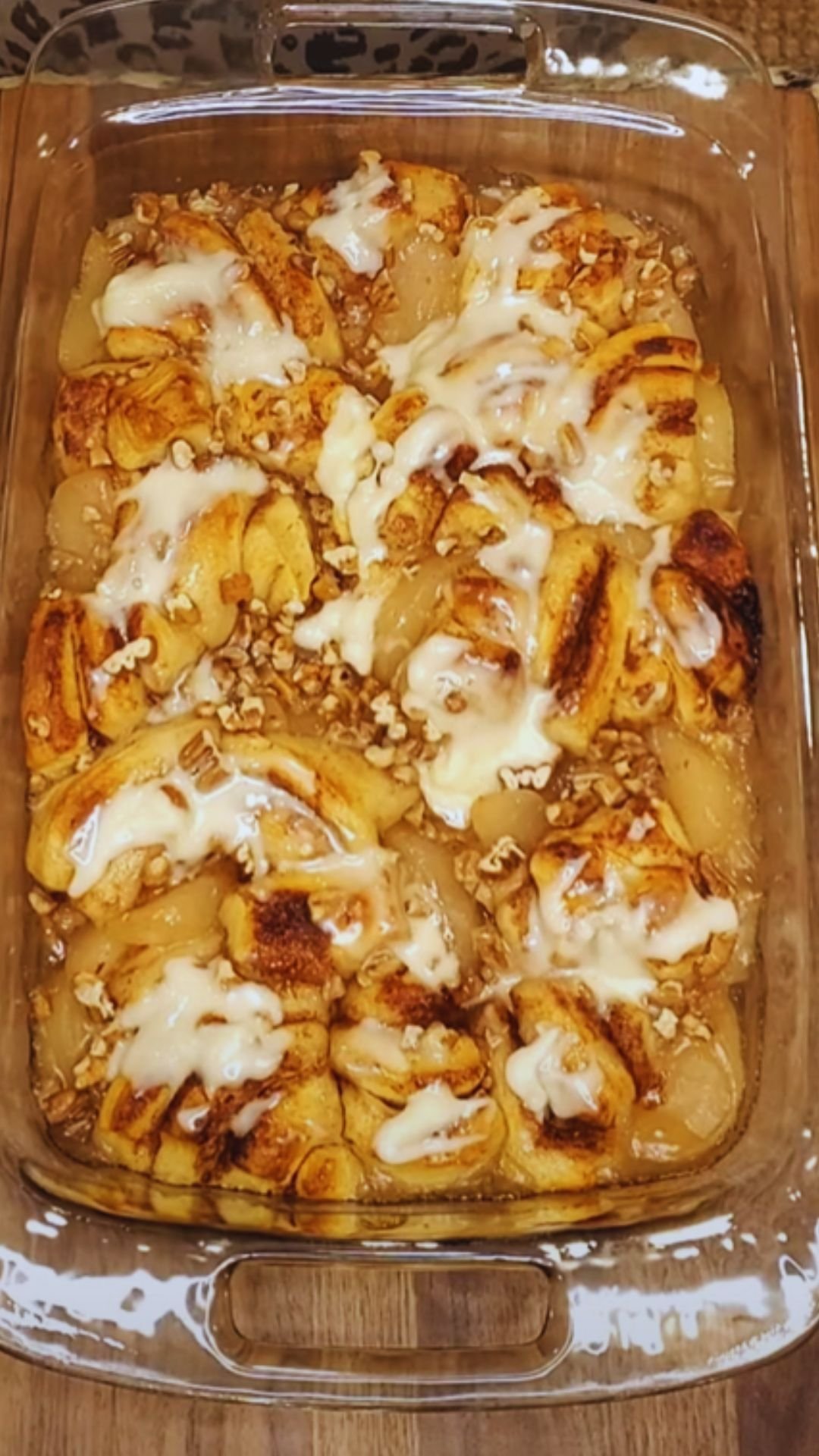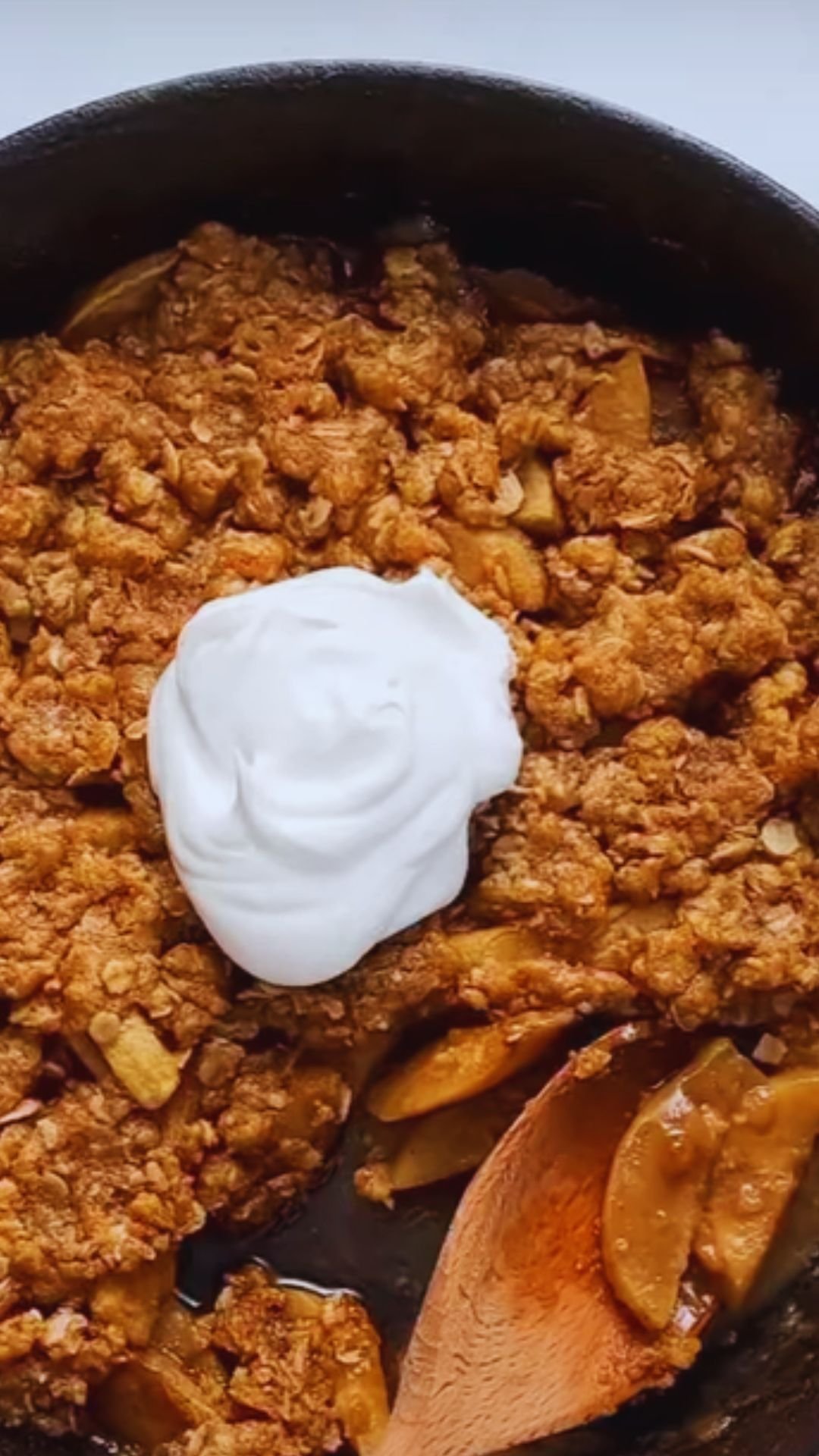Have you ever wondered what makes bakery muffins so irresistible or why that coffee cake at your favorite café has you coming back for more? The secret often lies in that crumbly, sweet topping known as streusel. Today, I’m sharing my foolproof brown sugar streusel recipe that will elevate your homemade desserts from ordinary to extraordinary.
As someone who has been baking for over two decades, I’ve perfected this versatile topping that works on everything from muffins to pies. The beautiful thing about brown sugar streusel is its simplicity—just a few pantry staples transform into a delectable crunchy topping that adds texture, sweetness, and that professional bakery finish to your treats.
What is Streusel?
Before diving into the recipe, let’s talk about what streusel actually is. Streusel (pronounced “STROI-zuhl”) is a crumbly topping made with flour, butter, and sugar. Originating in Germany, the word “streusel” literally means “to strew” or “to scatter,” which perfectly describes how this topping is used—scattered over desserts before baking.
While traditional German streusel often contains spices like cinnamon, modern variations can include nuts, oats, and different types of sugar. My brown sugar version leans into that warm, molasses flavor that pairs perfectly with fall fruits and spiced desserts, though it’s versatile enough for year-round enjoyment.
Why This Brown Sugar Streusel Recipe Works
I’ve tinkered with countless streusel recipes over the years, and this one stands out for several reasons:
- Perfect texture: The ratio of ingredients creates that ideal crumbly consistency that’s neither too sandy nor too doughy
- Rich flavor: Brown sugar provides depth that granulated sugar alone can’t match
- Versatility: Works beautifully on muffins, quick breads, coffee cakes, fruit crisps, and pies
- Make-ahead friendly: Can be prepared in advance and frozen for up to three months
- Customizable: Easily adapts to include nuts, spices, or oats based on your preferences
The Essential Ingredients
For the perfect brown sugar streusel, quality matters. Here’s what you’ll need:
| Ingredient | Amount | Notes |
|---|---|---|
| All-purpose flour | 1 cup (120g) | Provides structure to the streusel |
| Light brown sugar | ⅔ cup (135g), packed | Adds moisture and caramel notes |
| Granulated sugar | 2 tablespoons (25g) | Helps create crispness |
| Ground cinnamon | 1 teaspoon | Adds warmth and aroma |
| Salt | ¼ teaspoon | Enhances all flavors |
| Unsalted butter | ½ cup (113g), cold | Creates the perfect crumb texture |
| Vanilla extract | ½ teaspoon (optional) | Deepens flavor profile |
Understanding Brown Sugar in Streusel
Brown sugar isn’t just regular sugar with color—it’s a critical ingredient that brings moisture and flavor complexity to your streusel. The molasses content in brown sugar:
Light brown sugar : Contains approximately 3.5% molasses, providing a subtle caramel flavor while maintaining a crumbly texture
Dark brown sugar : Contains approximately 6.5% molasses, offering deeper flavor but slightly more moisture (can be substituted but may result in larger crumbs)
Muscovado sugar : An unrefined brown sugar with high molasses content, providing intense flavor (use only if you want a very pronounced molasses taste)
Step-by-Step Instructions
Making perfect brown sugar streusel is all about technique. Follow these steps for consistent results every time:
- Combine dry ingredients: In a medium bowl, whisk together flour, brown sugar, granulated sugar, cinnamon, and salt until no lumps remain.
- Prepare the butter: Cut the cold butter into small cubes (about ¼-inch pieces).
- Create the crumbs: Add the butter to the dry ingredients. Using your fingertips, a pastry cutter, or two forks, work the butter into the flour mixture until it resembles coarse crumbs. If using vanilla extract, drizzle it in now.
- Test the texture: Squeeze a small amount of the mixture in your palm. It should hold together when compressed but break apart easily. If it’s too dry, add ½ tablespoon more butter; if too wet, add 1 tablespoon more flour.
- Chill if necessary: For the best defined crumbs, refrigerate the streusel for 15-20 minutes before using, especially if your kitchen is warm.

Troubleshooting Common Streusel Problems
Even experienced bakers sometimes run into issues with streusel. Here’s how to fix the most common problems:
| Problem | Cause | Solution |
|---|---|---|
| Streusel melts into the dessert | Butter too warm or pieces too small | Use cold butter and maintain pea-sized crumbs |
| Streusel too crumbly/won’t hold together | Not enough butter or over-mixed | Add ½ tablespoon more butter or work mixture less |
| Streusel too doughy | Too much butter or over-mixed | Add 1-2 tablespoons more flour and use a lighter touch |
| Streusel burns before dessert is done | Sugar content too high or positioned too close to heat source | Cover with foil or reduce sugar slightly in recipe |
| Streusel sinks into batter | Crumbs too heavy or batter too thin | Make smaller crumbs or partially bake dessert before adding topping |
Variations to Try
The beauty of this basic brown sugar streusel is how easily it can be customized. Here are some of my favorite variations:
Nutty Streusel
Add ⅓ cup of finely chopped nuts to the basic recipe:
- Pecans pair beautifully with apple desserts
- Walnuts work well with banana bread or carrot cake
- Almonds complement cherry or almond-flavored desserts
- Hazelnuts are perfect for chocolate-based recipes
Oatmeal Streusel
Replace ⅓ cup of the flour with old-fashioned rolled oats for a heartier texture, perfect for fruit crisps and cobblers. This variation adds fiber and a pleasant chewiness.
Spiced Streusel
Enhance the basic recipe with these spice combinations:
- Fall Spice: Add ¼ teaspoon each of nutmeg, ginger, and allspice
- Citrus Spice: Add 1 teaspoon of orange or lemon zest
- Cardamom Crunch: Add ¼ teaspoon of ground cardamom for an elegant, unexpected flavor
- Chocolate Chip: Add ¼ cup mini chocolate chips for a sweet tooth’s delight

Best Desserts for Brown Sugar Streusel
While this topping is versatile, it truly shines on certain desserts:
Fruit-Based Desserts
- Apple Crisp: The brown sugar and cinnamon perfectly complement the tartness of apples
- Peach Cobbler: Adds texture contrast to the soft, juicy peaches
- Berry Crumbles: Works with strawberries, blueberries, blackberries, or a mixed berry combination
- Plum or Rhubarb Desserts: Balances the natural tartness of these fruits
Baked Goods
- Muffins: Particularly delicious on blueberry, apple, or pumpkin muffins
- Coffee Cake: Creates that classic crumb cake texture
- Quick Breads: Try it on banana bread or zucchini bread for added interest
- Breakfast Pastries: Elevates simple scones or cinnamon rolls
Pies and Tarts
- Dutch Apple Pie: The traditional topping for this classic dessert
- Pumpkin Pie: Add to just the edges for a decorative and tasty crust enhancement
- Cheesecake: Sprinkle around the edges before baking for a pretty finish
- Fruit Tarts: Adds texture to smooth fruit fillings
Storage and Make-Ahead Tips
One of the things I love most about this streusel is how well it works for meal prep and advance baking:
Refrigerating
- Store in an airtight container
- Keeps well for up to 1 week
- May need to break up slightly before using
Freezing
- Freeze in a zip-top freezer bag
- Stores perfectly for up to 3 months
- No need to thaw before using—can be sprinkled directly on desserts while frozen
Pre-Toasting Option
For extra crunch and a deeper flavor:
- Spread streusel on a parchment-lined baking sheet
- Bake at 350°F (175°C) for 5-7 minutes until lightly golden
- Cool completely
- Store in an airtight container at room temperature for up to 2 weeks
- Use as a topping for ice cream, yogurt, or no-bake desserts
Comprehensive Brown Sugar Streusel Recipe
Now that you understand all the components and techniques, here’s the complete recipe in an easy-to-follow format:
Brown Sugar Streusel Topping
Yield: Enough for one 9-inch pie, 12 muffins, or an 8×8 fruit crisp
Prep Time: 10 minutes
Total Time: 10 minutes (plus chilling time if needed)
| Ingredient | Standard Measurement | Metric Measurement |
|---|---|---|
| All-purpose flour | 1 cup | 120g |
| Light brown sugar | ⅔ cup, packed | 135g |
| Granulated sugar | 2 tablespoons | 25g |
| Ground cinnamon | 1 teaspoon | 2.6g |
| Salt | ¼ teaspoon | 1.5g |
| Unsalted butter, cold | ½ cup (1 stick) | 113g |
| Vanilla extract | ½ teaspoon (optional) | 2.5ml |
| Add-ins (nuts, oats, etc.) | ⅓ cup (optional) | 40-50g |
Instructions:
- In a medium bowl, whisk together flour, brown sugar, granulated sugar, cinnamon, and salt until well combined and no lumps remain.
- Cut cold butter into small cubes, about ¼-inch pieces.
- Add butter to the dry ingredients. Using your fingertips, a pastry cutter, or two forks, work the butter into the mixture until it resembles coarse crumbs of varying sizes (from pea-sized to slightly larger).
- If using vanilla extract, drizzle it over the mixture and toss gently to incorporate.
- For add-ins such as chopped nuts or oats, fold them in now.
- For best results, chill the streusel for 15-20 minutes before using.
- Sprinkle generously over your dessert before baking according to your recipe’s instructions.
Recipe Notes:
- For larger, chunkier crumbs, squeeze portions of the streusel in your hand before sprinkling over your dessert.
- Adjust cinnamon or add other spices to complement your base dessert.
- For gluten-free streusel, substitute a 1:1 gluten-free flour blend.

Serving Suggestions
While streusel-topped desserts are delicious on their own, here are some ways to take them to the next level:
For Warm Desserts (Crisps, Cobblers, Pies)
- A scoop of vanilla ice cream
- Freshly whipped cream
- Caramel sauce drizzle
- A dusting of powdered sugar
For Muffins and Coffee Cakes
- Serve slightly warm with butter
- Pair with fresh fruit
- Accompany with hot coffee or tea
- A light glaze drizzled over the streusel
For Breakfast Treats
- Yogurt with additional streusel as a parfait
- Fresh fruit compote on the side
- Cream cheese spread
- Hot chocolate or coffee
Frequently Asked Questions
Q: Can I use salted butter instead of unsalted?
Yes, you can use salted butter—just omit the additional salt in the recipe. The flavor profile will be slightly different but still delicious.
Q: Why did my streusel melt into my muffins?
This typically happens when the butter pieces are too small or became too warm. Make sure to maintain some larger butter pieces (about pea-sized) and chill the streusel before using if your kitchen is warm.
Q: Can I make this streusel dairy-free?
Absolutely! Substitute the butter with a solid plant-based butter alternative (not margarine or oil). Brands like Earth Balance or Miyoko’s work well. The texture may be slightly different, but the results are generally good.
Q: How do I know how much streusel to put on my dessert?
For muffins, aim for about 1-2 tablespoons per muffin. For pies and crisps, you want a generous layer that covers the entire surface—about ¼-inch thick. Remember that streusel will spread slightly as it bakes.
Q: Is it possible to reduce the sugar in this recipe?
You can reduce the sugar by up to ¼ cup total, but be aware that this will affect both the flavor and texture. Sugar helps create that crisp, crumbly consistency, so reducing it will result in a less crisp topping.
Q: Can I add cocoa powder for a chocolate streusel?
Yes! Replace 2-3 tablespoons of the flour with an equal amount of unsweetened cocoa powder for a chocolate variation that pairs beautifully with cherry desserts or chocolate muffins.
Q: Why should I chill the streusel before using it?
Chilling helps firm up the butter, which prevents the streusel from melting too quickly during baking. This results in distinct crumbs rather than a uniform layer that melts into your dessert.
Q: How can I get those large, chunky crumbs like on bakery muffins?
The secret is to squeeze portions of the streusel firmly in your hand to create larger clusters before sprinkling over your dessert. Also, make sure your mixture isn’t too dry—it should hold together when pressed.
The History Behind Streusel
Streusel has a rich culinary history that dates back centuries. While we now associate it primarily with sweet desserts, its origins are quite interesting:
- Originated in Germany in the 18th century
- Traditional German streusel contained a higher ratio of butter and sugar than modern American versions
- Classic German streuselkuchen (streusel cake) remains a popular treat in Germany
- Was brought to America by German immigrants, where it evolved to include more spices and add-ins
- Pennsylvania Dutch cooking embraced streusel toppings, incorporating them into many traditional recipes
Understanding this history helps explain why streusel recipes vary so widely and why this simple topping has endured for generations. My recipe leans toward the American interpretation, with the brown sugar adding that signature caramel note that pairs so beautifully with our modern desserts.
Final Tips for Streusel Success
After years of baking with streusel, I’ve gathered these final bits of wisdom:
- Temperature matters: Always start with cold butter for the best texture
- Don’t overmix: Stop once you reach the coarse crumb stage to avoid a paste-like consistency
- Match your streusel to your dessert: Use complementary flavors and spices
- Consider the baking time: For longer-baking desserts, you may want to add the streusel partway through to prevent over-browning
- Trust your instincts: Streusel is


